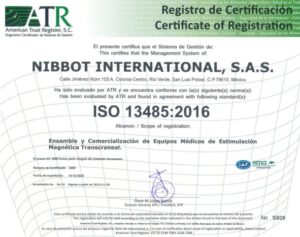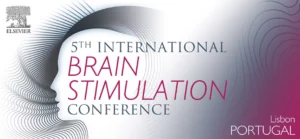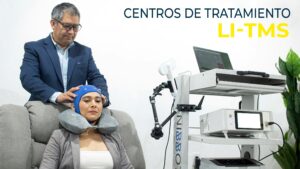Introduction:
Pulsed-type transcranial magnetic stimulation has been used under immaculate conditions to treat the entire brain of the patient.
In the following publication, a general analysis of the medical reports published for the application of treatment in patients with depression is made. The objective is to know the effects reported in each study.
Analysis:
PubMed was searched using the following search term as a description of tPEMF: (“picotesla” OR “nanotesla” OR “micro tesla” OR “milli tesla ”OR“ magnetic field * ”OR“ pulsed magnetic field ”OR“ electromagnetic field pulsed ” OR “extremely low frequency magnetic field” OR “extremely low frequency electromagnetic field” OR “pulsed magnetic field” OR “pulsed electromagnetic fields” OR “extremely low frequency magnetic fields” OR “extremely low frequency electromagnetic fields” ) . We combined the term with putative working mechanisms of tPEMF, which were formulated previously (Kortekaas et al., 2013). We specifically focused on the effects of tPEMF on mood disorders. We screened titles and abstracts for potential tPEMF working mechanisms, and please read the articles in their entirety if you feel eligible. We also checked the references of these articles for additional literature.
3.1. electrophysiological effects
Neuroimaging studies in MDD have consistently shown decreased activity in the dorsolateral prefrontal cortex (DLPFC), an area involved in executive functioning (Drevets, 2001; Lepping et al., 2014; Pascual-Leone et al., 1996 ; Videbech, 2000). These observations are consistent with [18F]-fluorodeoxyglucose (FDG) PET studies showing prefrontal glucose metabolism in MDD (Hosokawa et al., 2009; Videbech, 2000). After treatment with the SSRI paroxetine, increases in glucose metabolism were observed in cortical areas of the brain previously implicated in MDD, including parts of the prefrontal, parietal, and dorsal anterior cingulate cortex (Kennedy et al., 2001).
Importantly, in both preclinical and clinical studies, repetitive TMS (rTMS) also appears to be able to increase glucose metabolism in these areas. For example, increased FDG uptake was observed in rats after 1 Hz and 50 Hz rTMS stimulation, compared to sham stimulation (Parthoens et al., 2014). Changes in FDG uptake were also observed in healthy volunteers stimulated with active or sham rTMS (Cho et al., 2012; Kimbrell et al., 2002). Furthermore, rTMS targeting the DLPFC of patients suffering from MDD has been shown to increase cortical excitability and alleviate depressive symptoms (Lepping et al., 2014; Pascual-Leone et al., 1996).
The electrophysiology involved in increased cortical excitability is relatively well understood. However, it is important to make a distinction between the effects of acute and repeated stimulation. Clearly, transcranial magnetic stimulation can promote action potentials in neurons, as demonstrated by the ability of TMS to induce motor responses (Barker et al., 1985; Pell et al., 2011; Siebner et al., 2009). However, stimulation at higher frequencies (N1 Hz) could trigger more complex mechanisms leading to a sustained increase in excitability of the cortical area involved. This adaptive process likely involves lasting changes in synaptic activity through neurophysiological mechanisms reminiscent of long-term potentiation (LTP) and long-term depression (LTD) (Pell et al., 2011). The subject of this review is tPEMF stimulation, a variant of rTMS with a much lower electromagnetic field strength. Brain stimulation with tPEMF is a relatively new technique and, as a consequence, only limited information is available on its mode of action. However, given the fact that both rTMS and tPEMF use fluctuating magnetic fields to induce small currents in the brain (Faraday’s law) and their effects on action potentials and synaptic plasticity might be somewhat similar. Still,
Compared to rTMS, the effects of tPEMF are likely to be more subtle, making it questionable whether tPEMF can actually induce action potentials (Rahbek et al., 2005). A more likely explanation would be that the energy barriers are simply reduced at the lower electromagnetic field strength of tPEMF, thus facilitating the generation of action potentials.
Based on mouse data (Prato et al., 2011), the penetration depth at which this occurs is expected to be 2–3 cm from the coil to the underlying brain tissue (Kortekaas et al., 2013), which it is comparable with the penetration depths reported for TMS (Silva et al., 2008).
In particular, tPEMF has been reported to influence brain glucose metabolism, thereby affecting local brain activity (Volkow et al., 2010). In this study, electromagnetic field stimulation via the EPI Gradient of an MRI scanner was applied to 15 healthy controls in a simulated and controlled manner. Glucose metabolism was assessed by FDG PET scan immediately afterwards. Interestingly, brain glucose metabolism during the active EPI gradient was decreased in the inferior occipital, inferior frontal, superior parietal, and posterior insular cortices (Volkow et al., 2010).
3.2. Effects on oscillatory states.
Electroencephalographic studies indicate that focally applied rTMS in depressed patients has effects in the brain beyond the stimulated area (Leuchter et al., 2013). This is in accordance with the growing evidence that a large network of brain regions is affected in MDD (Fingelkurts et al., 2006). Given the clear changes in EEG alpha band connections between brain areas, MDD is increasingly viewed as a disorder that affects connectivity between cortical regions (Fingelkurts et al., 2006; Leuchter et al., 2013). .
This disrupted connectivity has been associated with desynchronization of neural firing (Anastassiou et al., 2011; Fingelkurts et al., 2006). Possibly, weak electromagnetic fields could influence the underlying disorganization in the oscillatory states of neurons. This is supported by studies showing that low resistance pulsed magnetic fields are capable of affecting EEG activity.
(Cook et al., 2005, 2009).
For example, in a randomized crossover controlled design with 20 healthy volunteers, stimulation with tPEMF (b500 Hz; 0.2 mT; CNP pulse) elicited decreased resting alpha wave activity over the occipital and parietal region during sleep. dream. dream. exposure. to the fields, compared to sham exposure, when first exposed to active stimulation (Cook et al., 2005). This effect did not persist during the post-exposure period (Cook et al., 2005). In another controlled, randomized, crossover, single-blind study with 32 volunteers, similar effects of exposure to magnetic fields (b500 Hz; 0.2 mt; CNP-pulse) on alpha activity were observed (Cook et al., 2009). Furthermore, tPEMF stimulation in healthy volunteers has been reported to directly influence the functional connectivity between Broca’s and Wernicke’s areas measured with NIRS (near infrared spectroscopy) and EEG (Curcic-Blake, 2014). It can be speculated that the antidepressant effects of tPEMF stimulation partly involve synchronization of cortical firing across entire networks of affected brain regions.
3.3. Effects on neuronal growth
Biomarker studies have shown that blood levels of brain-derived neurotrophic factor (BDNF) are decreased in depressed patients compared with healthy controls (Brunoni et al., 2008; Molendijk et al., 2014; Player et al., 2013; Sen et al., 2008). The BDNF peptide is a growth factor involved in the survival and growth of neurons. The significant decrease in BDNF levels in depressed patients is one of the pillars of the neurogenesis/neuroplasticity hypothesis of MDD (Gould, 1999; Kempermann & Kronenberg, 2003; Molendijk et al., 2014; Sapolsky, 2004). Another argument in favor of the neurogenesis/neuroplasticity hypothesis is the increased levels of BDNF in the blood of MDD patients after treatment with antidepressant drugs (Brunoni et al., 2008; Molendijk et al., 2014). Changes in BDNF levels after rTMS treatment are less pronounced, as levels may increase (Dall’Agnol et al., 2014; Zhang et al., 2007), decrease (Schaller et al., 2014) or not change at all (Lang et al. al. al., 2008). A recent systematic review and meta-analysis showed no change in BDNF levels after rTMS stimulation (Brunoni et al., 2015).
The effect of tPEMF on BDNF levels in humans has yet to be evaluated. However, there is circumstantial evidence that PEMF
influences neuronal growth. An in vitro study in a murine dopaminergic cell line MN9D showed that PEMF signals
(27.12 MHz; 5 uT; 13 V/m) increased neurite length and cell body size within three days, as opposed to a control and null condition (Lekhraj et al., 2014). In addition, the expression of BDNF mRNA.
Neonatal rat dorsal root ganglion neurons were reported to be increased after exposure to PEMF (50 Hz; 1 mT) (Li et al., 2014). Consequently, tPEMF could also influence neuronal growth in living beings. Clearly, animal and patient studies are warranted to verify and support such an assumption.
3.4. immunological effects
The MDD immune hypothesis postulates that inflammatory processes are involved in the development of depression (Maes, 1995). Proinflammatory cytokines such as IL-1β and TNF-α have been postulated to trigger hyperactivity of the HPA axis (Leonard, 2001), eventually leading to reduced serotonin synthesis as well as formation of kynurenins and neurotoxic isoquinolines. also to a decrease in neurogenesis. (Dantzer et al., 2008; Jentsch et al., 2015; Maes et al., 2011).
The immune hypothesis is supported by two meta-analyses showing a positive association between depression and elevated levels of proinflammatory markers (Dowlati et al., 2010; Howren et al., 2009). Dysregulation in depression is also supported by an intervention study with the proinflammatory drug interferon-α (Friebe et al., 2010) and by several randomized clinical trials with nonsteroidal anti-inflammatory drugs and cytokine inhibitors (Kohler et al., 2014 ). . Cytokines are small signaling proteins that can be divided into a pro-inflammatory (TH1) and an anti-inflammatory (TH2 and TH3) group. Elevated levels of proinflammatory cytokines are indeed a hallmark of an inflammatory response in depression (Anisman et al., 2002; Licinio and Wong, 1999; Miller et al., 2009), but the results of the
TH2 cytokines were much less consistent. However, because cytokines mutually influence release, the balance between pro-inflammatory cytokines (TH1) and anti-inflammatory cytokines (TH2 and TH3) might be particularly important (Kim et al., 2007; Sutcigil et al., 2007).
PEMF stimulation could have anti-inflammatory effects and influence cytokine levels (Pesce et al., 2013). Most of the evidence comes from studies in the fields of orthopedics and general surgery. For example, a recent study showed a significant decrease in human fibroblast-like cell cultures of IL-1β and TNF-α cytokine production on days 14 and 21 after PEMF stimulation on days 7, 8, and 9. (50hz). ; 2.25 mT) against a control condition (Gomez-Ochoa et al., 2011). One study, targeting the progression of osteoarthritis in a rabbit model, showed a clear decrease in serum TNF-α levels after 10 days of 30-minute (75 Hz) PEMF stimulation, compared to a control group. (Guo et al., 2011). ) . Additional evidence comes from a study in rats showing that PEMF stimulation 1 h per day for 9 days (7.5 Hz; 66 μT; 0.48 V/m) reduced levels of the cytokines IL-1β, IL- 6 and TNF-α, measured in these 9 days (Chang et al., 2004).
In humans, PEMF stimulation specifically reduces IL-1β levels (Rohde et al., 2010). This was demonstrated in a randomized, double-blind, placebo-controlled study applying PEMF stimulation for 20 min every 4 h for the first 3 days, then once every 8 h for the next 3 days, then twice daily (27, 12 MHz; 5 uT; 3.2 V/m) directly after reduction surgery. Six hours after surgery, IL-1β in wound exudate was found to be significantly reduced in the active treatment group compared to placebo. This difference was maintained until 24 h postoperatively, after which no further measurements were made. No significant effect on TNFα was found (Rohde et al., 2010). This effect of PEMF stimulation on IL-1β is particularly interesting in view of a head injury study in rats showing significant decreases in IL-1β levels in liquor after PEMF treatment. (Rasouli et al., 2012). Rats were injured under two different conditions.
First, they received a head injury and were exposed to PEMF treatment at a constant regimen of 5 min of stimulation every 20 min for 6 h (27.12 MHz; 40 V/m). Second, they were exposed to enter the brain and then stimulated with PEMF. In a control experiment, without PEMF stimulation, both conditions resulted in increased levels of IL-1β in liquor six hours after injury. However, there was a significant decrease in IL-1β levels in the PEMF-stimulated group compared to the control (Rasouli et al., 2012). This latter study is important because it indicates that tPEMF stimulation can effectively alter CSF IL1β levels, at least in rats and with high frequency.
In summary, there is evidence of a low-grade inflammatory process in the pathophysiology of depression. This process could be important both in the onset of depression (Friebe et al., 2010) and in its treatment with adjuvant anti-inflammatory drugs (Kohler et al., 2014). PEMF stimulation could also target inflammatory processes, as demonstrated by its ability to decrease cytokine levels in vitro and in vivo (Chang et al., 2004; Gomez-Ochoa et al., 2011; Guo et al., 2011). ; Rasouli et al., 2012). There are no data available in the literature on the effects of tPEMF stimulation on serum and CSF cytokine levels in humans. Still, the circumstantial evidence collected so far suggests that PEMF’s antidepressant properties can be partly attributed to its effects on low-grade inflammatory processes in depression, possibly through restoring the balance between proinflammatory and anti-inflammatory cytokines.
3.5. Chronobiological effects of tPEMF
A well-organized biological clock is essential for mental well-being in both humans and animals (Barnard & Nolan, 2008; Bunney. Mood can vary particularly with changes and disturbances of the biological clock (Monteleone & Maj, 2008; Barnard & Nolan , 2008; Hasler, 2010; Boivin et al., 1997; McClung, 2007).In addition, it is clear that biological restoration has a beneficial effect on depressive symptoms.For example, the efficacy of phototherapy for seasonal affective disorder ( SAD) and non-seasonal depression might suggest that restoration of circadian rhythms is relevant to the treatment of mood disorders (Benedetti et al., 2007; Rosenthal et al., 1984; Terman, 2007).
First, there is circumstantial evidence that weak alternating electromagnetic fields can shorten circadian rhythms in healthy controls (Wever, 1970, 1973). This was investigated in a series of two experiments.
In the first experiment, the circadian rhythms of 82 human subjects were studied in an underground bunker, protected from all environmental influences. The isolation unit contained two separate sections, one protected from external electromagnetic fields but the other not. This demonstrated that shielding against external electromagnetic fields significantly lengthened circadian periods (Wever, 1970, 1973). In a second experiment, weak alternating electromagnetic fields (10 Hz) were generated only in the shielded section. This intervention significantly shortened circadian periods by 1.3 h (Wever, 1970, 1973).
Second, there is evidence that the biological clock protein cryptochrome is sensitive to weak magnetic fields. The cryptochrome protein inhibits the transcriptional-translational feedback loop that controls circadian rhythms (Reppert and Weaver, 2001, 2002).
and is, therefore, an intrinsic molecular regulator of the biological clock (Chaves et al., 2011; Emery et al., 1998; Griffin et al., 1999; Thresher et al., 1998; van der Horst et al., 1999 ). ). ; Vitaterna et al., 1999). Cryptochromatic proteins are sensitive to weak magnetic fields due to their ability to form radical pairs from molecules with a single unpaired electron (Maeda et al., 2012; Solov’yov et al., 2012). This was shown by
measure the amount of radicals produced in samples of cryptochrome protein from the Arabidopsis thaliana plant when exposed to legumes
magnetic fields (non-static; 29 mT). Cryptochrome was also shown to respond to approximately 50 μT ground-force magnetic fields at physiological temperatures (Maeda et al., 2012).






